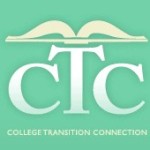One broad of mine is to create more inclusive communities – where diverse individuals have
equal access, opportunity, and engagement. I recently participated in the Diversity Leadership Initiative through the Riley Institute at Furman University. There, I worked with a team of community activists to bring the Hidden Disabilities Sunflower Program to airports, hotels, tourist destinations, athletic arenas, and retailers in the Lowcountry and beyond in an effort to create a welcoming and accepting environment for individuals with hidden disabilities (e.g., hearing impairment, autism, Alzheimer’s disease, PTSD). With the Sunflower program, any individual can opt to receive a lanyard or pin that signals to staff that they may need extra time, patience, or support. It is a simple, low-cost, inclusive way for organizations to provide support and additional grace to anyone who may benefit from it. Our team developed a Guidebook that organizations can use to start supporting individuals with hidden disabilities.
Inclusive educational settings are those that allow all kinds of students to learn and grow together in the classroom as well as on the playground and in the lunch room. In these settings, all students thrive. Historically, students with intellectual disabilities have not had access to inclusive classrooms, but instead have been segregated in separate settings. Sadly, many students with intellectual disabilities are STILL segregated, despite decades of research showing that those who are included in regular classrooms are years ahead in social, linguistic, and mathematical skills. Inclusive classrooms also benefit students without disabilities, as these settings offer new teaching techniques and the opportunity to learn first-hand about diversity, tolerance, empathy, and individual strengths.
Inclusion works at ALL levels, from kindergarten through college.
What to know more about how to include students with intellectual disabilities
in college courses? Check out this webinar put out by
the Florida Consortium for Inclusive Higher Education (click here)
Click on the titles below to access materials from Sue Buckley’s training on differentiation coursework at the K-12 level:
Elementary Session Middle/High School Session Research Session
In 2010, the College of Charleston developed an inclusive educational program for students with intellectual disabilities that offers a full college experience (academic, residential, social and  professional) for students with intellectual disabilities. This program was made possible by a starter grant from the College Transition Connection, as well as a $2.3 million federal grand under the model comprehensive Transition and Postsecondary Programs for Students with Intellectual Disabilities (TPSID; see the TPSID website for more details). R.E.A.C.H. (Realizing Educational and Career Hopes) is a four-year, innovative program designed to provide students with intellectual disabilities the opportunity to experience the academic, residential, social, and cultural opportunities here at the College. Please see the REACH website for more information.
professional) for students with intellectual disabilities. This program was made possible by a starter grant from the College Transition Connection, as well as a $2.3 million federal grand under the model comprehensive Transition and Postsecondary Programs for Students with Intellectual Disabilities (TPSID; see the TPSID website for more details). R.E.A.C.H. (Realizing Educational and Career Hopes) is a four-year, innovative program designed to provide students with intellectual disabilities the opportunity to experience the academic, residential, social, and cultural opportunities here at the College. Please see the REACH website for more information.
At the high school level, in 2007 Bishop England High School in Charleston, SC implemented the Options Program so that students with intellectual disabilities can learn and share all aspects of the high school experience with typical age mates. The Options program at BEHS has spawned several other programs nationally, including one at Cardinal Newman High School in Columbia, SC. There are now more than 10 Catholic schools in SC that embrace students with disabilities. For more information about inclusion and current efforts to expand inclusive opportunities, feel free to contact me.
Check out this wonderful article about the inclusive efforts at Bishop England

